Bruce A. Fette, Bruce Fette9780750679527, 0750679522
Table of contents :
Cognitive Radio Technology……Page 4
Copyright Page……Page 5
Contents……Page 6
List of Contributors……Page 18
Foreword……Page 22
1.1 The Vision of Cognitive Radio……Page 28
1.2 History and Background Leading to Cognitive Radio……Page 29
1.3 A Brief History of SDR……Page 31
1.4.1 The Hardware Architecture of an SDR……Page 35
1.4.2 Computational Processing Resources in an SDR……Page 38
1.4.3 The Software Architecture of an SDR……Page 40
1.4.5 Smart Antennas in a Cognitive Radio……Page 42
1.5 Spectrum Management……Page 44
1.5.1 Managing Unlicensed Spectrum……Page 45
1.5.2 Noise Aggregation……Page 46
1.5.3 Aggregating Spectrum Demand and Use of Subleasing Methods……Page 48
1.6.1 DARPA……Page 49
1.6.3 NSF/CSTB Study……Page 50
1.7 How Smart Is Useful?……Page 51
1.8 Organization of this Book……Page 52
2.1 Introduction……Page 56
2.2 Cognitive Radio Technology Enablers……Page 57
2.3.1 Current Spectrum Access Techniques……Page 60
2.3.2 Opportunistic Spectrum Access……Page 66
2.4 Policy Challenges for Cognitive Radios……Page 69
2.4.1 Dynamic Spectrum Access……Page 70
2.4.2 Security……Page 73
2.4.3 Communications Policy before Cognitive Radio……Page 75
2.4.5 US Telecommunications Policy, Beginning with the Titanic……Page 76
2.4.6 US Telecommunications Policy: Keeping Pace with Technology……Page 78
2.5.1 Basic Geometries……Page 80
2.5.2 Introduction of Dynamic Policies……Page 83
2.5.3 Introduction of Policy-Enabled Devices……Page 85
2.5.4 Interference Avoidance……Page 87
2.6 Global Policy Interest in Cognitive Radios……Page 88
2.6.2 US Reviews of Cognitive Radios for Dynamic Spectrum Access……Page 89
2.7 Summary……Page 96
3.1 Introduction……Page 100
3.2 Hardware Architecture……Page 102
3.2.1 The Block Diagram……Page 103
3.2.2 Baseband Processor Engines……Page 109
3.2.3 Baseband Processing Deployment……Page 114
3.2.4 Multicore Systems and System-on-Chip……Page 116
3.3 Software Architecture……Page 117
3.3.1 Design Philosophies and Patterns……Page 118
3.4.1 GNURadio……Page 121
3.4.2 Software Communications Architecture……Page 122
3.5.1 Application Software……Page 135
3.6 Development……Page 138
3.6.1 Component Development……Page 139
3.6.2 Waveform Development……Page 140
3.7 Cognitive Waveform Development……Page 141
3.8 Summary……Page 143
4.1 Introduction……Page 146
4.2.1 Continuum of Radio Flexibility and Capability……Page 147
4.2.2 Examples of Software Capable Radios……Page 148
4.3.1 Aware Radios……Page 153
4.3.2 Adaptive Radios……Page 158
4.3.3 Cognitive Radios……Page 159
4.5 Available Technologies for CRs……Page 160
4.5.2 Spectrum Awareness/Frequency Occupancy……Page 162
4.5.4 Time……Page 163
4.5.6 Software Technology……Page 165
4.6 Funding and Research in CRs……Page 171
4.6.1 Cognitive Geolocation Applications……Page 173
4.6.2 Dynamic Spectrum Access and Spectrum Awareness……Page 175
4.6.3 The Rendezvous Problem……Page 180
4.6.4 CR Authentication Applications……Page 182
4.7 Timeline for CRs……Page 183
4.7.2 Manufacture of New Products……Page 184
4.8 Summary and Conclusions……Page 185
5.1 Introduction……Page 190
5.2 The Interference Avoidance Problem……Page 191
5.3 Cognitive Radio Role……Page 192
5.4 Spectral Footprint Minimization……Page 193
5.5.1 Spectrum Usage Reporting……Page 195
5.5.2 Spectrum Sensing……Page 196
5.5.3 Potential Interference Analysis……Page 197
5.5.5 Distributed Sensing and Operation……Page 200
5.6 Channel Awareness and Multiple Signals in Space……Page 201
5.7 Spectrally Aware Networking……Page 203
5.8 Overlay and Underlay Techniques……Page 205
5.9 Adaptive Spectrum Implications for Cognitive Radio Hardware……Page 207
5.10 Summary: The Cognitive Radio Toolkit……Page 209
Appendix: Propagation Energy Loss……Page 210
6.2 Background and Definitions……Page 212
6.3 Spectrum Policy……Page 214
6.3.1 Management of Spectrum Policy……Page 215
6.4 Antecedents for Cognitive Policy Management……Page 216
6.4.1 Defense Advanced Research Projects Agency Policy Management Projects……Page 217
6.4.2 Academic Research in Policy Management……Page 218
6.4.3 Commercial Applications of Policy Management……Page 221
6.4.4 Standardization Efforts for Policy Management……Page 222
6.5.1 Concept for Policy Engine Operations……Page 225
6.5.2 Technical Approaches for Policy Management……Page 227
6.5.3 Enabling Technologies……Page 229
6.6.1 Software Communications Architecture Integration……Page 231
6.6.2 Policy Engine Design……Page 233
6.6.3 Integration of the Radio into a Network Policy Management Architecture……Page 236
6.7.1 Military Opportunities for Cognitive Policy Management……Page 238
6.7.2 Commercial Opportunities for Spectrum Management……Page 239
6.7.3 Obstacles to Adoption of Policy Management Architectures……Page 240
6.8 Summary……Page 241
7.1 Introduction……Page 246
7.2 Optimizing PHY and Link Layers for Multiple-Objectives Under Current Channel Conditions……Page 247
7.3 Defining the Cognitive Radio……Page 249
7.4.1 PHY- and Link-Layer Parameters……Page 250
7.4.2 Modeling Outcome as a Primary Objective……Page 254
7.5.1 Definition of MODM and Its Basic Formulation……Page 257
7.5.3 The Pareto-Optimal Front: Finding the Nondominated Solutions……Page 258
7.5.4 Why the Radio Environment Is a MODM Problem……Page 259
7.5.5 GA Approach to the MODM……Page 260
7.6.1 Cognition Loop……Page 266
7.6.2 Representing Radio Parameters as Genes in a Chromosome……Page 271
7.6.3 Multi-dimensional Analysis of the Chromosomes……Page 272
7.6.5 Example of the WSGA……Page 276
7.7 Advanced GA Techniques……Page 279
7.7.1 Population Initialization……Page 280
7.7.2 Priming the GA with Previously Observed Solutions……Page 281
7.7.3 CBDT Initialization of GAs……Page 282
7.8.2 Rewards for Good Behavior and Punishments for Poor Performance……Page 285
7.9 How the Intelligent Computer Operates……Page 287
7.9.1 Sensing and Environmental Awareness……Page 288
7.9.3 Case-Based Learning……Page 289
7.10 Summary……Page 290
8.1 Introduction……Page 296
8.2 Radio Geolocation and Time Services……Page 297
8.2.1 GPS……Page 298
8.2.3 GPS Geolocation Summary……Page 302
8.3.1 Spatially Variant Network Service Availability……Page 303
8.4 Additional Geolocation Approaches……Page 305
8.4.1 Time-Based Approaches……Page 306
8.4.2 AOA Approach……Page 313
8.4.3 RSS Approach……Page 314
8.6.1 Regulatory Region Selection……Page 315
8.6.2 Policy Servers and Regions……Page 319
8.7 Example of Cellular Telephone 911 Geolocation for First Responders……Page 320
8.8.1 Interface to Policy Engines……Page 321
8.9 Summary……Page 322
9.1 Introduction……Page 326
9.2 Applications and their Requirements……Page 327
9.3 Network Solutions to Requirements……Page 329
9.4 Coping with the Complex Trade-Space……Page 331
9.5 Cognition to the Rescue……Page 333
9.6 The DARPA SAPIENT Program……Page 335
9.7 Summary……Page 337
10.1 Introduction……Page 340
10.2.1 Speaker Recognition……Page 341
10.2.2 Language Identification……Page 350
10.2.4 Speech-to-Text Conversion……Page 352
10.2.5 Machine Translation……Page 353
10.2.6 Background Noise Suppression……Page 354
10.2.7 Speech Coding……Page 355
10.2.9 Noise Characterization……Page 356
10.3 Concierge Services……Page 357
10.4 Summary……Page 359
11.1 Introduction……Page 364
11.2 Internal and External Network Support……Page 365
11.3 Introduction to the REM……Page 366
11.4.2 REM Design……Page 368
11.4.3 Enabling Techniques for Implementing REM……Page 370
11.5.1 Awareness: Prerequisite for Cognitive Radio……Page 372
11.5.2 Classification of Awareness……Page 374
11.5.3 Obtaining SA……Page 376
11.6 Network Support Scenarios and Applications……Page 380
11.6.1 Infrastructure-Based Network and Centralized Global REM……Page 381
11.6.2 Ad hoc Mesh Networks and Distributed Local REMs……Page 382
11.7 Supporting Elements to the REM……Page 384
11.8 Summary and Open Issues……Page 387
12.1 Introduction……Page 392
12.2 Knowledge Representation and Reasoning……Page 396
12.2.1 Symbolic Representation……Page 398
12.2.2 Ontologies and Frame Systems……Page 399
12.2.3 Behavioral Representation……Page 401
12.2.4 Case-Based Reasoning……Page 402
12.2.5 Rule-Based Systems……Page 404
12.2.6 Temporal Knowledge……Page 405
12.2.7 Knowledge Representation Summary……Page 406
12.3 Machine Learning……Page 407
12.3.1 Memorization……Page 408
12.3.2 Classifiers……Page 409
12.3.3 Bayesian Logic……Page 410
12.3.4 Decision Trees……Page 412
12.3.5 Reinforcement-Based Learning……Page 413
12.3.6 Temporal Difference……Page 416
12.3.7 Neural Networks……Page 417
12.3.8 Genetic Algorithms……Page 419
12.3.9 Simulation and Gaming……Page 420
12.4.2 Brittleness and Edge Conditions……Page 421
12.4.3 Predictable Behavior……Page 422
12.5 Summary……Page 423
13.2 Knowledge-Intensive Characteristics of Cognitive Radio……Page 428
13.2.1 Knowledge of Constraints and Requirements……Page 430
13.2.3 Situation Awareness and Advice……Page 431
13.2.6 Query Responsiveness and Command Execution……Page 432
13.2.8 Dynamic Interoperability at Any Stack Layer……Page 433
13.3.1 Introduction……Page 434
13.3.2 Role of Ontology in Knowledge-Intensive Applications……Page 440
13.4.1 Physical Layer Ontology……Page 441
13.4.2 Data Link Layer Ontology……Page 443
13.5.1 Responding to Delays and Errors……Page 448
13.5.2 Adaptation of Training Sequence Length……Page 450
13.5.3 Data Link Layer Protocol Consistency and Selection……Page 452
13.6.1 Ontology Development and Consensus……Page 454
13.6.2 Ontology Mapping……Page 455
13.6.3 Learning……Page 456
13.6.4 Efficiency of Reasoning……Page 457
13.7 Summary……Page 458
14.1 Introduction……Page 462
14.2.1 AACR Functional Component Architecture……Page 463
14.2.2 Design Rules Include Functional Component Interfaces……Page 468
14.2.3 Near-Term Implementations……Page 475
14.2.4 The Cognition Components……Page 477
14.2.5 Self-referential Components……Page 482
14.2.6 Flexible Functions of the Component Architecture……Page 485
14.3.1 The Cognition Cycle……Page 487
14.3.2 Observe (Sense and Perceive)……Page 488
14.3.3 Orient……Page 489
14.3.4 Plan……Page 490
14.3.7 Learning……Page 491
14.3.8 Self-monitoring……Page 492
14.4 CRA III: The Inference Hierarchy……Page 493
14.4.1 Atomic Stimuli……Page 495
14.4.3 Basic Sequences……Page 496
14.4.4 NL in the CRA Inference Hierarchy……Page 497
14.4.5 Observe–Orient Links for Scene Interpretation……Page 499
14.4.6 Observe–Orient Links for Radio Skill Sets……Page 500
14.4.7 General World Knowledge……Page 501
14.5 CRA IV: Architecture Maps……Page 503
14.5.1 CRA Topological Maps……Page 504
14.5.3 CRA-Reinforced Hierarchical Sequences……Page 505
14.5.4 Behaviors in the CRA……Page 506
14.5.6 Industrial-Strength Inference Hierarchy……Page 508
14.6.1 Review of SWR and SDR Principles……Page 510
14.6.2 Radio Architecture……Page 513
14.6.3 The SCA……Page 514
14.6.4 Functions-Transforms Model of Radio……Page 517
14.6.6 Cognitive Electronics……Page 518
14.6.7 When Should a Radio Transition toward Cognition?……Page 519
14.7 Cognition Architecture Research Topics……Page 521
14.8 Industrial-Strength AACR Design Rules……Page 522
14.9 Summary and Future Directions……Page 524
15.1 Introduction……Page 528
15.2.1 Mathematical Preliminaries……Page 532
15.2.2 A Formal Model of a Cognitive Radio Network……Page 533
15.2.3 Analysis Objectives……Page 536
15.3.1 A Dynamical Systems Approach……Page 540
15.3.2 Contraction Mappings and the General Convergence Theorem……Page 545
15.3.3 Markov Models……Page 551
15.4 Applying Game Theory to the Analysis Problem……Page 556
15.4.1 Basic Elements of Game Theory……Page 557
15.4.2 Mapping the Basic Elements of a Game to the Cognition Cycle……Page 560
15.4.3 Basic Game Models……Page 561
15.4.4 Basic Game Theory Analysis Techniques……Page 565
15.5.1 Potential Games……Page 571
15.5.2 Supermodular Games……Page 581
15.6.1 Distributed Power Control……Page 590
15.6.2 Dynamic Frequency Selection……Page 595
15.6.3 Adaptive Interference Avoidance……Page 596
15.7 Summary and Conclusions……Page 599
15.8 Questions……Page 602
16.2 Review of the Book……Page 608
16.3 Services Offered to Wireless Networks through Infrastructure……Page 614
16.3.1 Stand-Alone Radios with Cognition……Page 615
16.3.2 Cellular Infrastructure Support to Cognition……Page 616
16.3.3 Data Radios……Page 617
16.3.4 Cognitive Services Offered through Infrastructure……Page 618
16.3.5 The Remaining Hard Problems……Page 620
A……Page 622
C……Page 623
D……Page 624
F……Page 625
I……Page 626
L……Page 627
N……Page 628
P……Page 629
R……Page 630
S……Page 631
T……Page 632
W……Page 633
Z……Page 634
A……Page 636
C……Page 637
D……Page 638
G……Page 639
H……Page 640
L……Page 641
N……Page 642
P……Page 643
R……Page 645
S……Page 646
V……Page 648
Z……Page 649
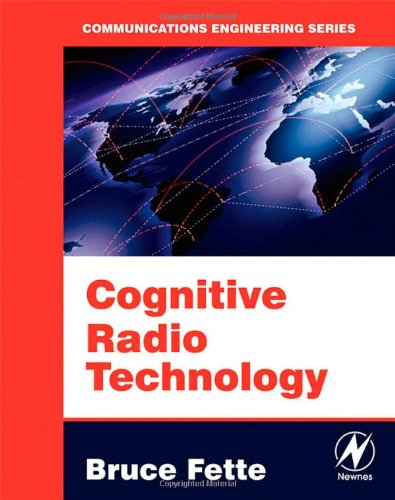
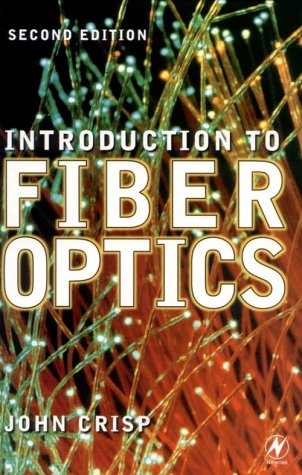

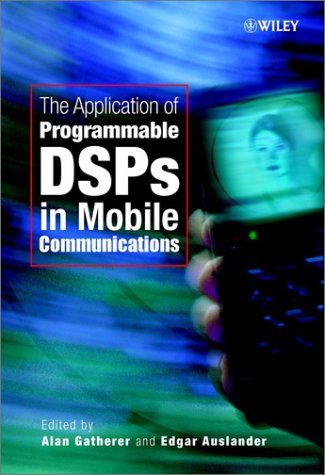
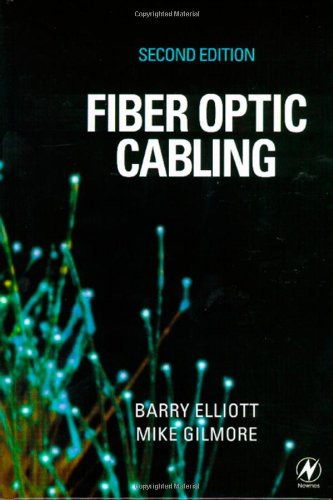
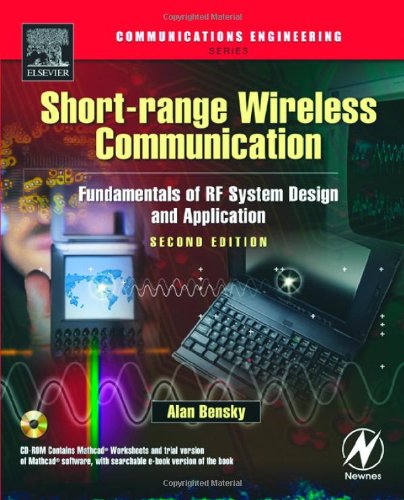

Reviews
There are no reviews yet.